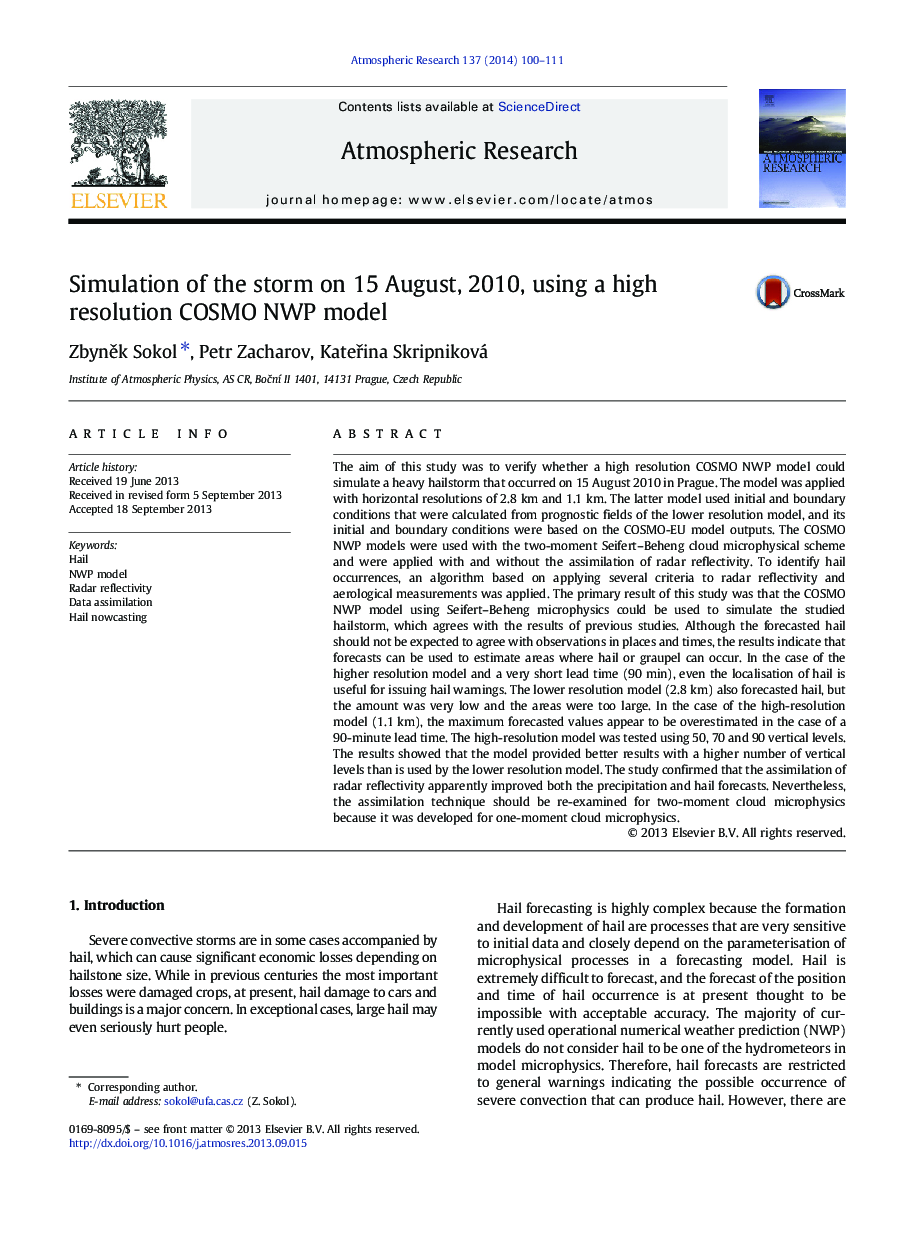| کد مقاله | کد نشریه | سال انتشار | مقاله انگلیسی | نسخه تمام متن |
|---|---|---|---|---|
| 4449935 | 1620533 | 2014 | 12 صفحه PDF | دانلود رایگان |

• Two-moment cloud microphysics proposed by Seifert and Beheng can be used to simulate hailstorms.
• The COSMO forecast with a lead time of 90 min can be used for warning of dangerous hail.
• The assimilation of radar reflectivity improves precipitation forecasts for the high resolution model.
• The horizontal resolution of the model significantly influences the hail forecast.
The aim of this study was to verify whether a high resolution COSMO NWP model could simulate a heavy hailstorm that occurred on 15 August 2010 in Prague. The model was applied with horizontal resolutions of 2.8 km and 1.1 km. The latter model used initial and boundary conditions that were calculated from prognostic fields of the lower resolution model, and its initial and boundary conditions were based on the COSMO-EU model outputs. The COSMO NWP models were used with the two-moment Seifert–Beheng cloud microphysical scheme and were applied with and without the assimilation of radar reflectivity. To identify hail occurrences, an algorithm based on applying several criteria to radar reflectivity and aerological measurements was applied. The primary result of this study was that the COSMO NWP model using Seifert–Beheng microphysics could be used to simulate the studied hailstorm, which agrees with the results of previous studies. Although the forecasted hail should not be expected to agree with observations in places and times, the results indicate that forecasts can be used to estimate areas where hail or graupel can occur. In the case of the higher resolution model and a very short lead time (90 min), even the localisation of hail is useful for issuing hail warnings. The lower resolution model (2.8 km) also forecasted hail, but the amount was very low and the areas were too large. In the case of the high-resolution model (1.1 km), the maximum forecasted values appear to be overestimated in the case of a 90-minute lead time. The high-resolution model was tested using 50, 70 and 90 vertical levels. The results showed that the model provided better results with a higher number of vertical levels than is used by the lower resolution model. The study confirmed that the assimilation of radar reflectivity apparently improved both the precipitation and hail forecasts. Nevertheless, the assimilation technique should be re-examined for two-moment cloud microphysics because it was developed for one-moment cloud microphysics.
Observed (a; black area) and forecasted hail (b) for the lead time of 90 min.Figure optionsDownload as PowerPoint slide
Journal: Atmospheric Research - Volume 137, February 2014, Pages 100–111